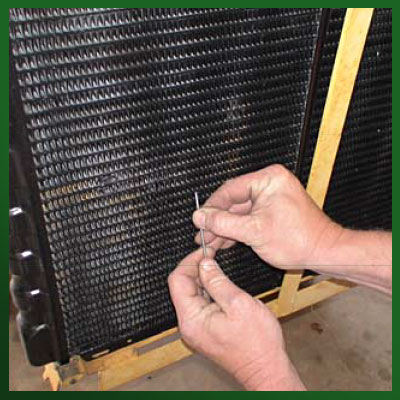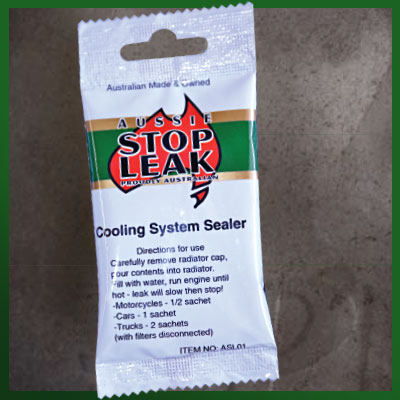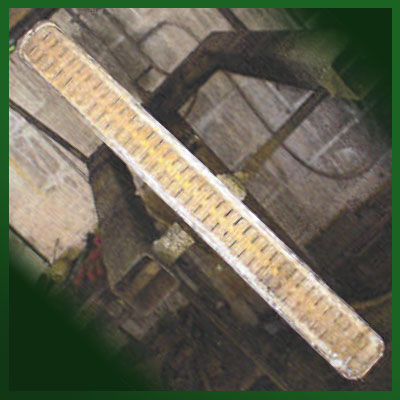Independent Engineers Report
Witnessing of Aussie Stop Leak cooling system sealer.

Date and time: 10.30am, October 14th 2007.
The apparatus set up (see photos):
• Engine: Ford V8 naturally aspirated 351cu.in Clevelend
• Engine no.: JG37DU38928K
• Gearbox: Ford XD Falcon
• Radiator: used Ford XD Falcon
Other equipment:
stop watch and radiator pressure tester
Testing: 1x sachet only of Aussie Stop Leak
To Whom It May Concern;
Mobility Engineering is recognised and referred to by various industry organizations for independent automotive paint defects, repairs, mechanical and structural analysis. This report has been prepared based on witnessing of actual test and information provided by the above mentioned person.
The following provides details of the test carried out and associated observations and comments.
At the time of arrival the test apparatus was already set up as shown in image 1. Mr. Ferris then drained about five litres of the radiator fluid into a bucket for me to see the fluid type/mixture before the test. The fluid indicated to be normal coolant and water mix being slightly rusty due to rust in the engine cooling passages. The radiator was then re-filled using normal tap water.

Image 1.
The coolant system was then pressure tested using a normal (as used by motor mechanics) coolant system pressure tester. The result indicated that the system was holding pressure, hence concluding that there was no leak in the system.
At 10.48 AM the engine was started and let to run for about 1 or 2 minutes. A stainless steel 3mm diameter rod with a sharp point was then used (Image 2) to poke a hole into one of the cross cooling tubes in the core at approximately centre and half way down.
Radiator coolant then started to rush out of the hole at normal system pressure
(Image 3).
The engine was then stopped and let to cool for around 10 minutes so that the radiator cap could be safely opened. The company had a barrel full of pre-packed small sachets of their product being labelled Aussie Stop Leak. One of these was randomly chosen and opened and poured into the radiator

Image 2.
Image 4, is a photo of the powder sachet used.
The radiator was then topped up with normal tap water and the engine started. The leak was still present and progressively after approximately 1.5 minutes the leak stopped whilst the engine was still running.
Image 6 shows the condition of the radiator’s header tank after the test. After inspection no obvious adverse effect on the interior of the radiator was indicated. In additional a narrow flat steel bar was also fed inside each of the cross core tubes and this also did not indicate any blockage.

Image 4.

Image 3.
Conclusions and discussions
As a result it was concluded that the Aussie Stop Leak powder works effectively in stopping a relatively large radiator leak within a short period of time. Noting that the engine used here is considered large for normal passenger cars, the powder should work effectively for such vehicles.
It is noted that the vehicle owner should keep a watch on the engine coolant temperature during the period of time that it takes for the powder to work to ensure that the engine does not overheat in the interim. However, during the above test the leak was stopped in a period short enough for this not to happen.
The following are claims made by Mr. Matt Ferris in response to some of my questions:
The powder works by circulation and only works by heat and reaction to atmospheric gases. As a result, it is claimed that the powder will remain inert within the system unless there is a leak to expose the system to atmospheric gases thereby it will not adhere itself to cooling system’s passage walls.
It is claimed that for engine head gasket leaks it would take around 20 minutes for the powder to work. In this situation, the powder should be used under controlled condition to ensure that the engine is not damaged due to overheating prior to sealing taking effect.
It is claimed that the sealant powder will remain in the system and continue to work if a leak becomes present unless the system is flushed.
Yours faithfully,
M. Akbarian Msc, FIE (Aust.),
CPEng. Director

Image 5.

Image 6.
